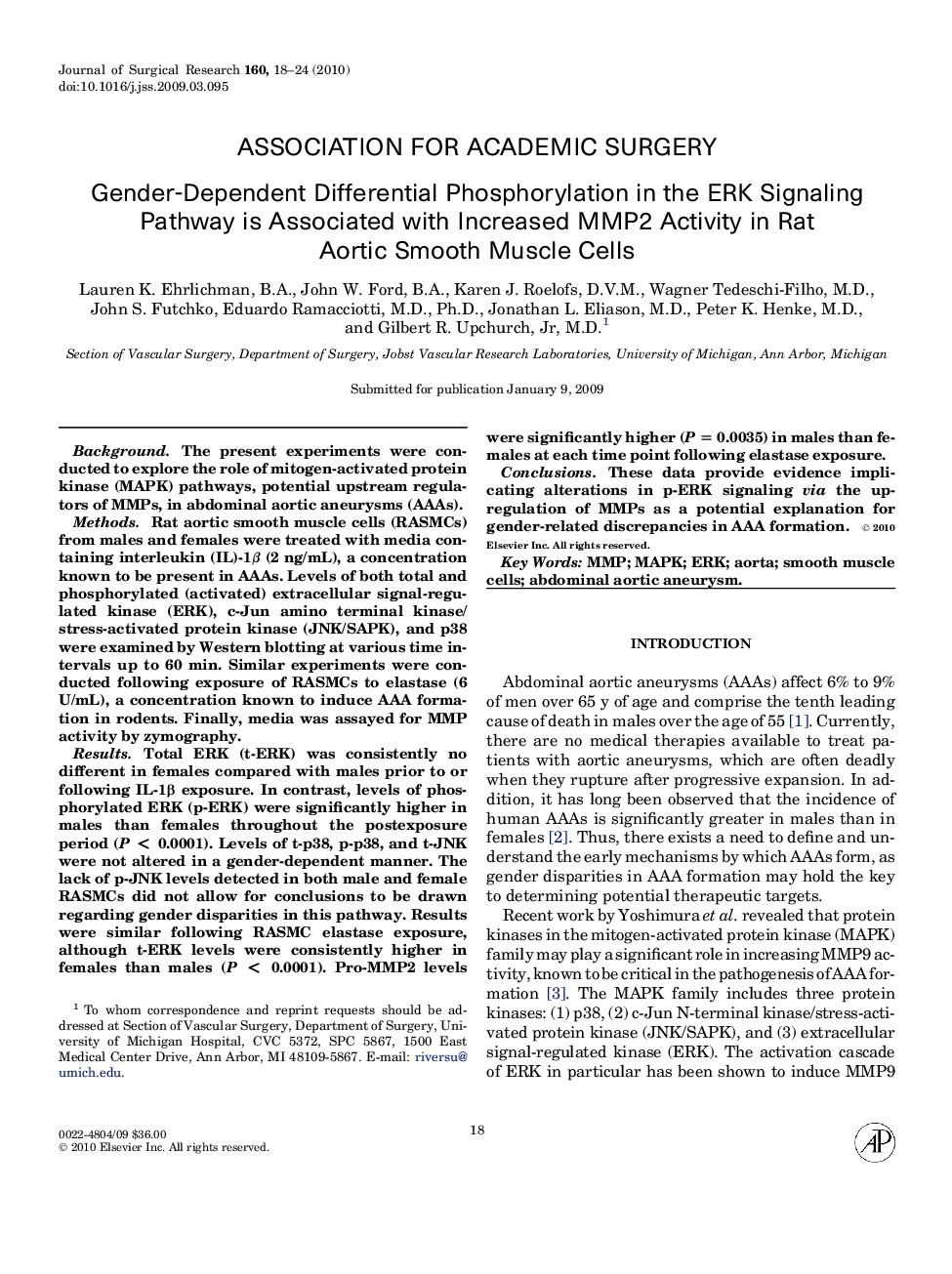| کد مقاله | کد نشریه | سال انتشار | مقاله انگلیسی | نسخه تمام متن |
|---|---|---|---|---|
| 4303213 | 1288474 | 2010 | 7 صفحه PDF | دانلود رایگان |

BackgroundThe present experiments were conducted to explore the role of mitogen-activated protein kinase (MAPK) pathways, potential upstream regulators of MMPs, in abdominal aortic aneurysms (AAAs).MethodsRat aortic smooth muscle cells (RASMCs) from males and females were treated with media containing interleukin (IL)-1β (2 ng/mL), a concentration known to be present in AAAs. Levels of both total and phosphorylated (activated) extracellular signal-regulated kinase (ERK), c-Jun amino terminal kinase/stress-activated protein kinase (JNK/SAPK), and p38 were examined by Western blotting at various time intervals up to 60 min. Similar experiments were conducted following exposure of RASMCs to elastase (6 U/mL), a concentration known to induce AAA formation in rodents. Finally, media was assayed for MMP activity by zymography.ResultsTotal ERK (t-ERK) was consistently no different in females compared with males prior to or following IL-1β exposure. In contrast, levels of phosphorylated ERK (p-ERK) were significantly higher in males than females throughout the postexposure period (P < 0.0001). Levels of t-p38, p-p38, and t-JNK were not altered in a gender-dependent manner. The lack of p-JNK levels detected in both male and female RASMCs did not allow for conclusions to be drawn regarding gender disparities in this pathway. Results were similar following RASMC elastase exposure, although t-ERK levels were consistently higher in females than males (P < 0.0001). Pro-MMP2 levels were significantly higher (P = 0.0035) in males than females at each time point following elastase exposure.ConclusionsThese data provide evidence implicating alterations in p-ERK signaling via the up-regulation of MMPs as a potential explanation for gender-related discrepancies in AAA formation.
Journal: Journal of Surgical Research - Volume 160, Issue 1, 1 May 2010, Pages 18–24